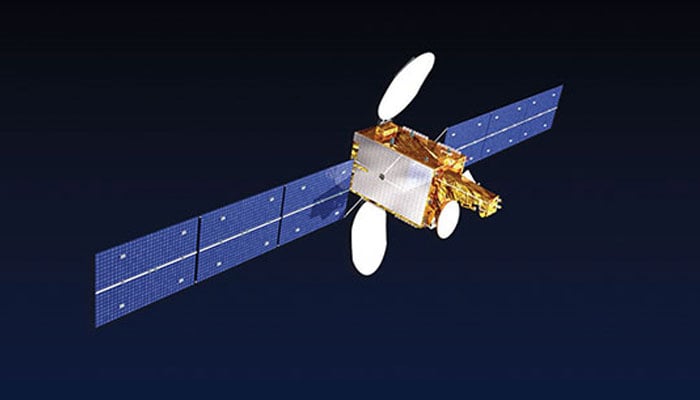Pakistan to launch communication satellite PAKSAT MM1
Suparco says PAKSAT MM1 will prove to be a stepping stone in the transformation of ‘Digital Pakistan’
May 21, 2024

- Launch to take place on May 30 from XiChang Satellite Launch Centre.
- Suparco collaborates with Chinese aerospace industry for venture.
- Project is part of Pakistan's National Space Program 2047.
KARACHI: The Space and Upper Atmosphere Research Commission (Suparco) Tuesday announced the launch of Pakistan's Multi Mission Communication Satellite PAKSAT MM1.
The launch will take place on May 30, 2024 from XiChang Satellite Launch Centre (XSLC), China, the national space agency said, adding that the project is part of the National Space Program 2047.
According to a statement released today, the PAKSAT MM1 was conceived as a joint venture between Suparco and Chinese aerospace industry, keeping in sight the growing needs of the country in the broad-spectrum of communication and connectivity.
"This satellite project is a hallmark of technological cooperation between Peoples’ Republic of China and Pakistan," the statement read.
It added that the satellite, based on advanced communication technologies, will play a pivotal role in the socio-economic uplift of the country.
"It will prove to be a stepping stone in the transformation of the country into Digital Pakistan," Suparco said.
The agency stated that the launch ceremony will be shown live for media from its establishments in Karachi and Islamabad.
It should be noted that, so far, Pakistan has sent at least six assets in space such as BADR-A, BADR-B, PAKSAT 1-R, PRSS-1, PakTes 1-A and iCube Qamar.
Earlier this month, iCube-Qamar, Pakistan's first satellite mission to the moon, sent the first-ever images of the moon captured in the lunar orbit following its ascent in the space.
Making this a groundbreaking development, according to IST, Qamar became the first Pakistani satellite to enter the lunar orbit and completed its rotation in 12 hours.
The scientists termed the development “a great success overall”.









